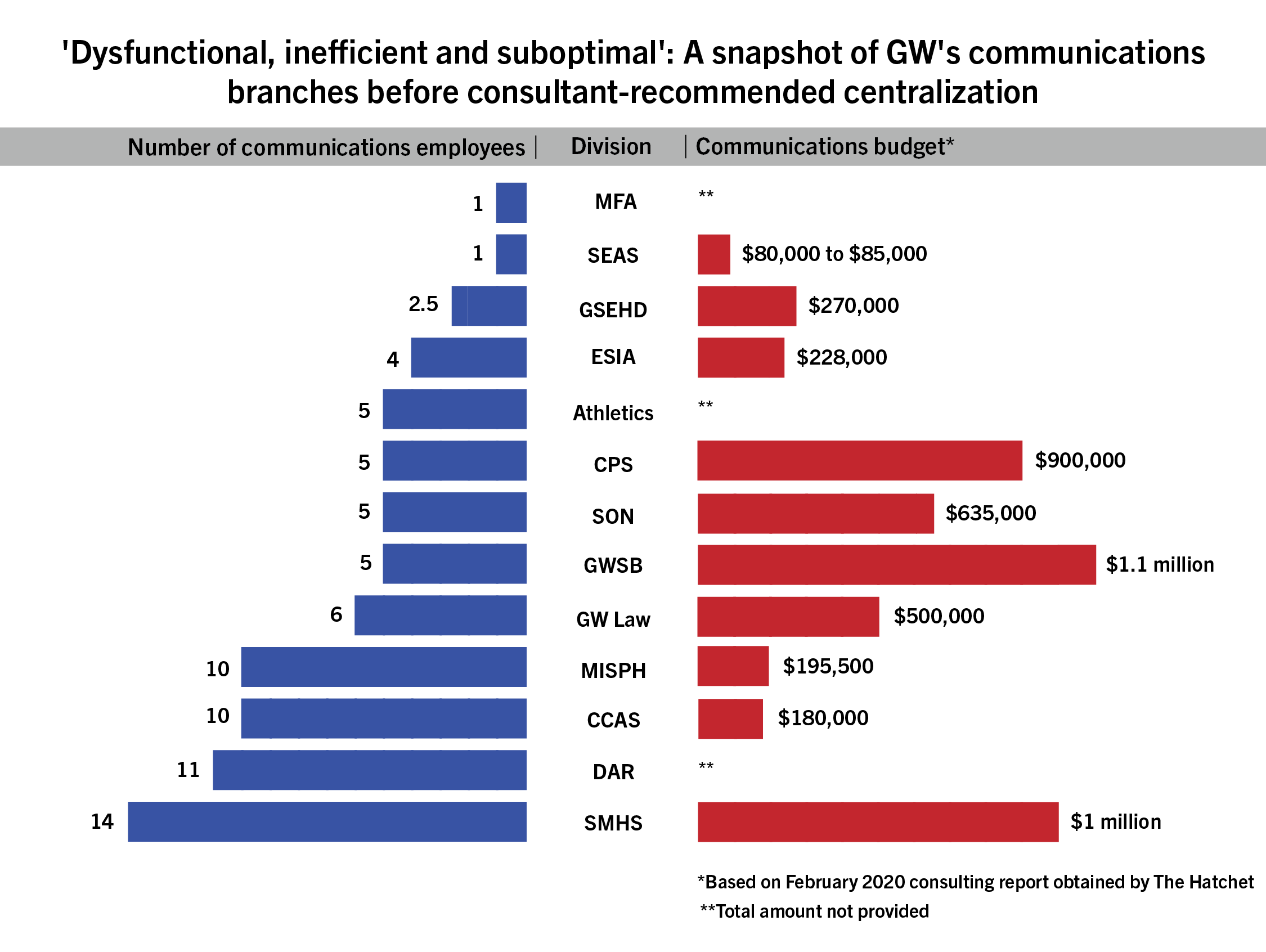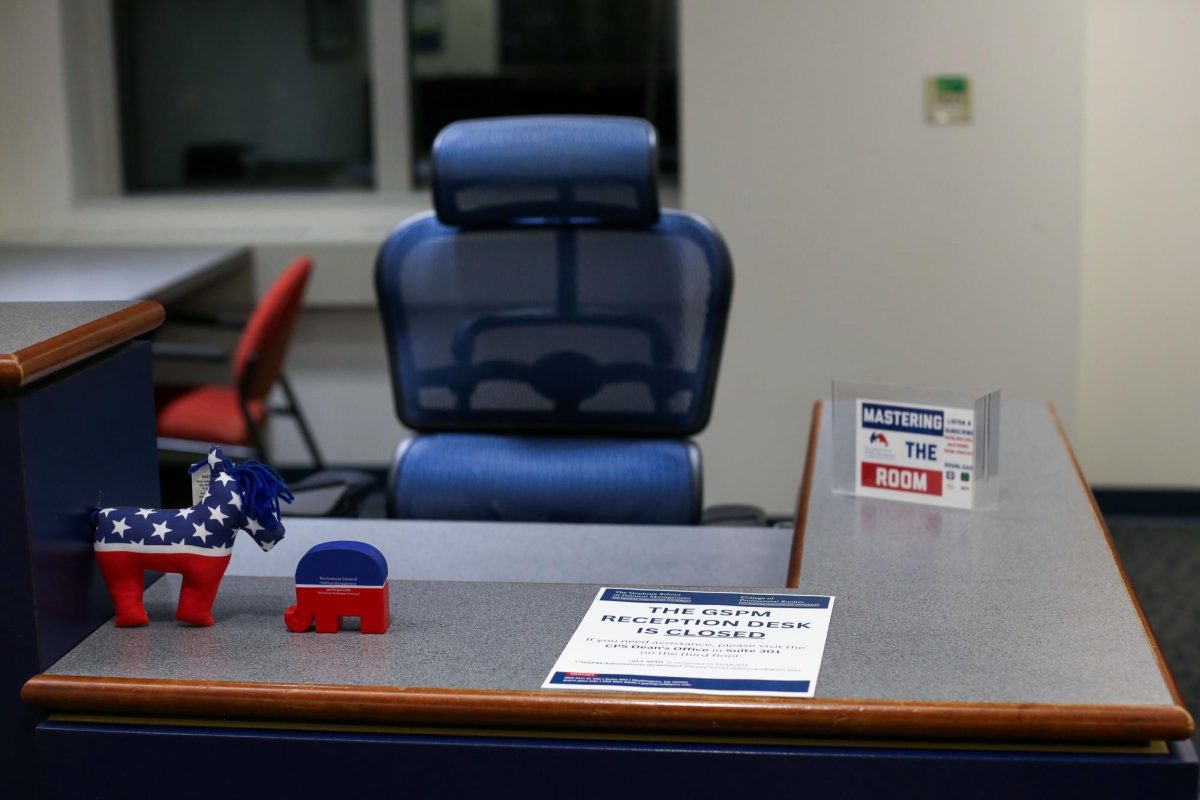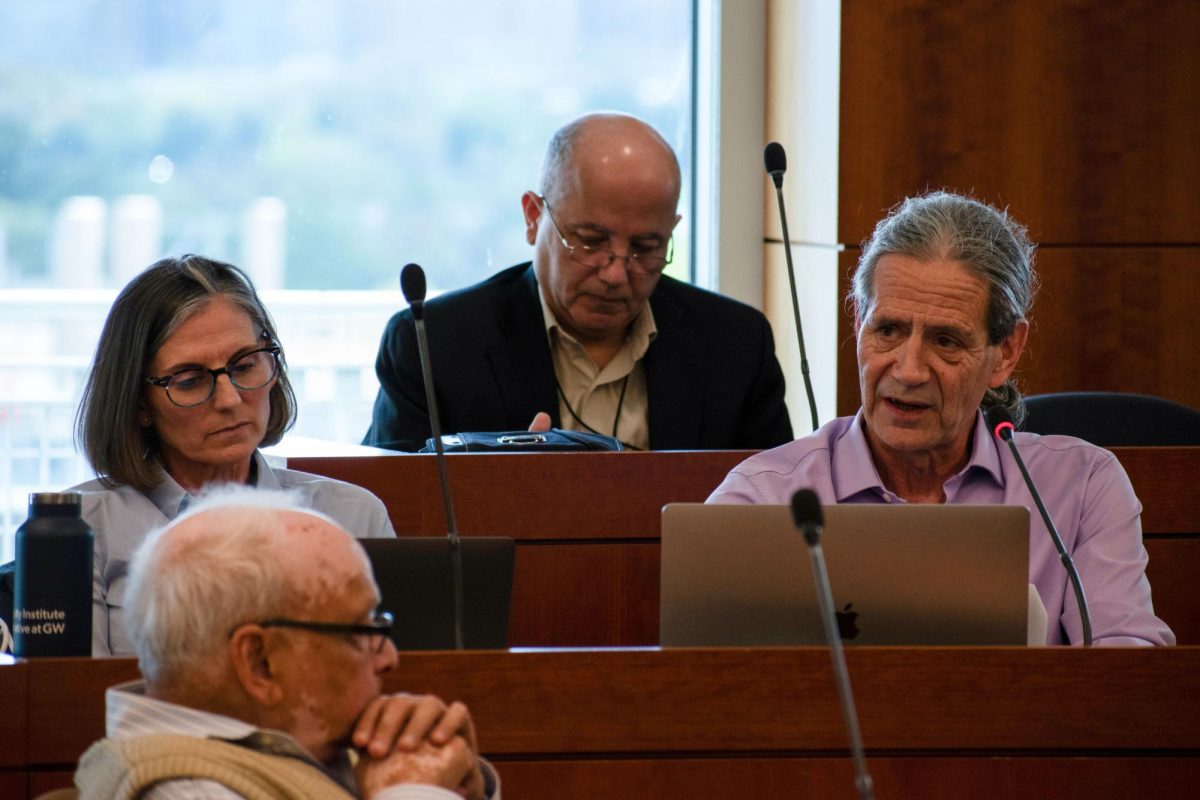Updated: Nov. 16, 2020 at 2:32 p.m.
Officials spent millions on decentralized communications departments across GW before consolidating the units into the Office of Communications and Marketing.
An internal consulting report published by The Hatchet late last month revealed the budgets for school- and division-based communications departments and staffs. The budget for all of the individual communications staffs before the centralization totaled about $4.85 million, with a combined professional staff of roughly 76 people, according to the report, which was written in February.
Now, officials are restructuring the division to a centralized model following a string of controversial layoffs. The communications staff utilized an unorganized and “dysfunctional” structure, according to the draft report, which was marked as confidential and compiled by higher education marketing firm SimpsonScarborough.

Sidney Lee | Graphics Editor
The largest individual communications staffs as of February included the School of Business, with a staff of five people and budget of $1.1 million; the School of Medicine and Health Sciences, with a staff of 14 people and budget of $1 million; and the College of Professional Studies, with a staff of five people and a budget of $900,000.
Among the smallest individual communications staffs and budgets were the Columbian College of Arts and Sciences, with a staff of 10 people and budget of $180,000; the School of Engineering and Applied Science, with a one-person staff and budget of roughly $85,000; and the Graduate School of Education and Human Development with a staff of “2.5” people and budget of $20,000.
Communications offices for the Office of the Vice President for Research, athletics and the Division of Development and Alumni Relations have very small communications budgets of roughly a few thousand dollars, the report states. The report includes an in-depth analysis of school and departmental communication operations and recommendations concerning departmental staff, budgets and initiatives.
The SimpsonScarborough report states that some of these staffs, like athletic department communications, act almost as independent or “internal agencies,” somewhat separate from Office of External Relations staff. Those independent offices contributed to the relative “dysfunction” of GW’s overall communications operations, according to the report.
The report states that GW should change the name of its Division of External Relations to “Office of Communications and Marketing.” It also recommends that the newly centralized department should implement “prioritized,” “annual,” “specific” and “measurable” goals.
The report also suggests that GW set goals, like increasing the ratio of undergraduate students majoring in the STEM fields to 30 percent, to heighten public awareness and strengthen rankings of GW and its schools. Officials put the strategic planning process, which included the undergraduate STEM major increase, on hold in light of the COVID-19 pandemic.
A centralized communications model would produce “higher-quality content,” create a staff led by “industry experts and leaders,” reinforce the idea of a “One GW” and provide a consistent physical location, which would promote “continuity,” the report states.
But the report also states the transition process will be complicated and time-consuming. The new model would require more thorough and better-communicated priorities and would likely be “slower” while the new processes are implemented.
The report also states that GW should continue to integrate the marketing teams of the University and GW Hospital under a brand called “GW Health,” by having those professionals report to the Office of Communications and Marketing. This integration would “create a more efficient and coordinated effort” within GW’s marketing team, according to the report.
Higher education and communications experts said it is a best practice for institutions to study their communications structures, making them as efficient and cohesive as possible.
Ken Turriff – the manager of communications and public relations for the University of Guelph-Humber in Ontario, Canada – said it is critical for a communications staff to collaborate, regardless of whether it be centralized or decentralized.
“There’s no universal model,” Turiff said. “It really depends on the institution or the post-secondary institution and what they feel works best for them. There’s nothing set in stone.”
Turriff said each institution has different communications models and needs, but various programs and departments do have “sub-brands,” and communications professionals need room to maneuver to promote those individual images. Many of GW’s individual schools and departments have their own “images” and reputations that communications teams work to promote, according to the report.
He said whether it be under a centralized or autonomous communications model, officials have to balance the need for an efficient model with the image of individual schools, departments and programs.
“They try to establish best practices for communications in terms of messaging and crisis communications and using social media,” Turiff said. “So how best do you get your message out? How best do you tell your story?”
Bethany Sherman – a New York-based communications consultant – said a centralized communications strategy can make it easier for officials to have consistent messaging.
“When you don’t have integrated communications, you’re going to potentially have gaps in your communication or dislocation from a messaging standpoint,” she said.
She said organizations need to find different ways of communicating to different stakeholders, like students, parents and faculty, within different institutions.
“I’m a fan of a centralized communication structure, in that you have a set of shared goals,” Sherman said. “So you really just need to figure out the right balance between giving people a sense of shared objectives, strategies and purpose at a university level.”
This post has been updated to correct the following:
An earlier version of this story stated CCAS had a one-person communications staff. The school had 10 communications staff members. It is now corrected.








